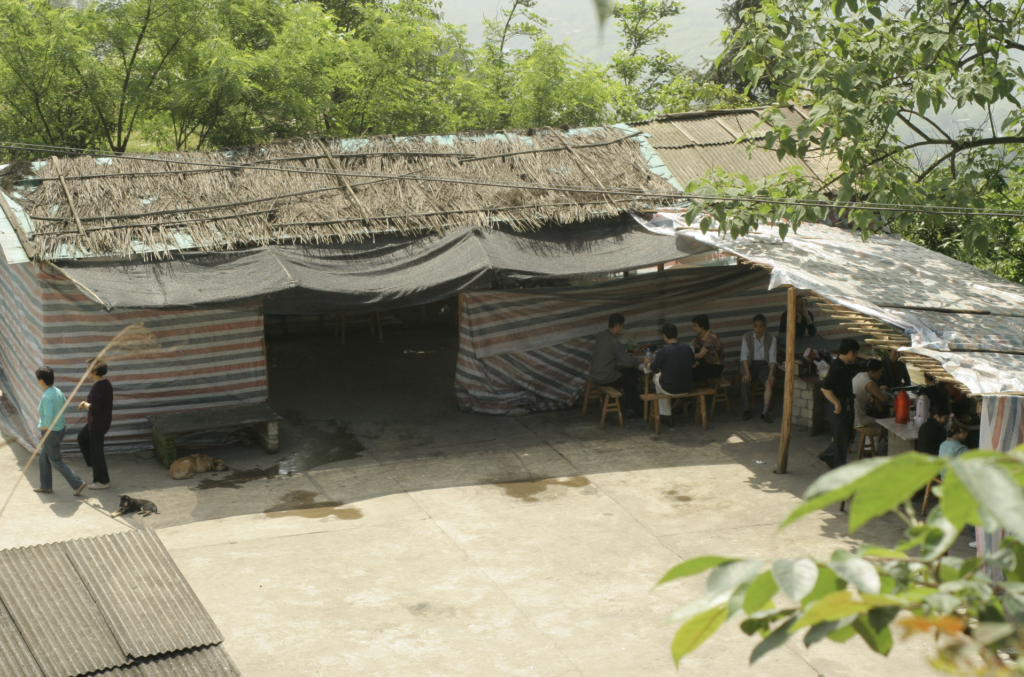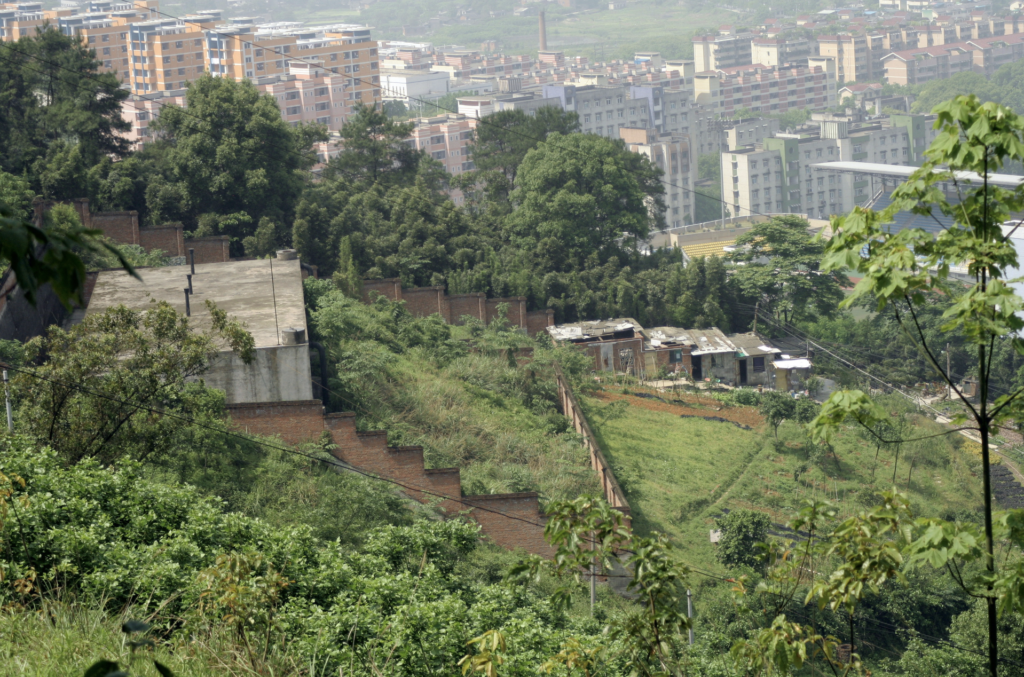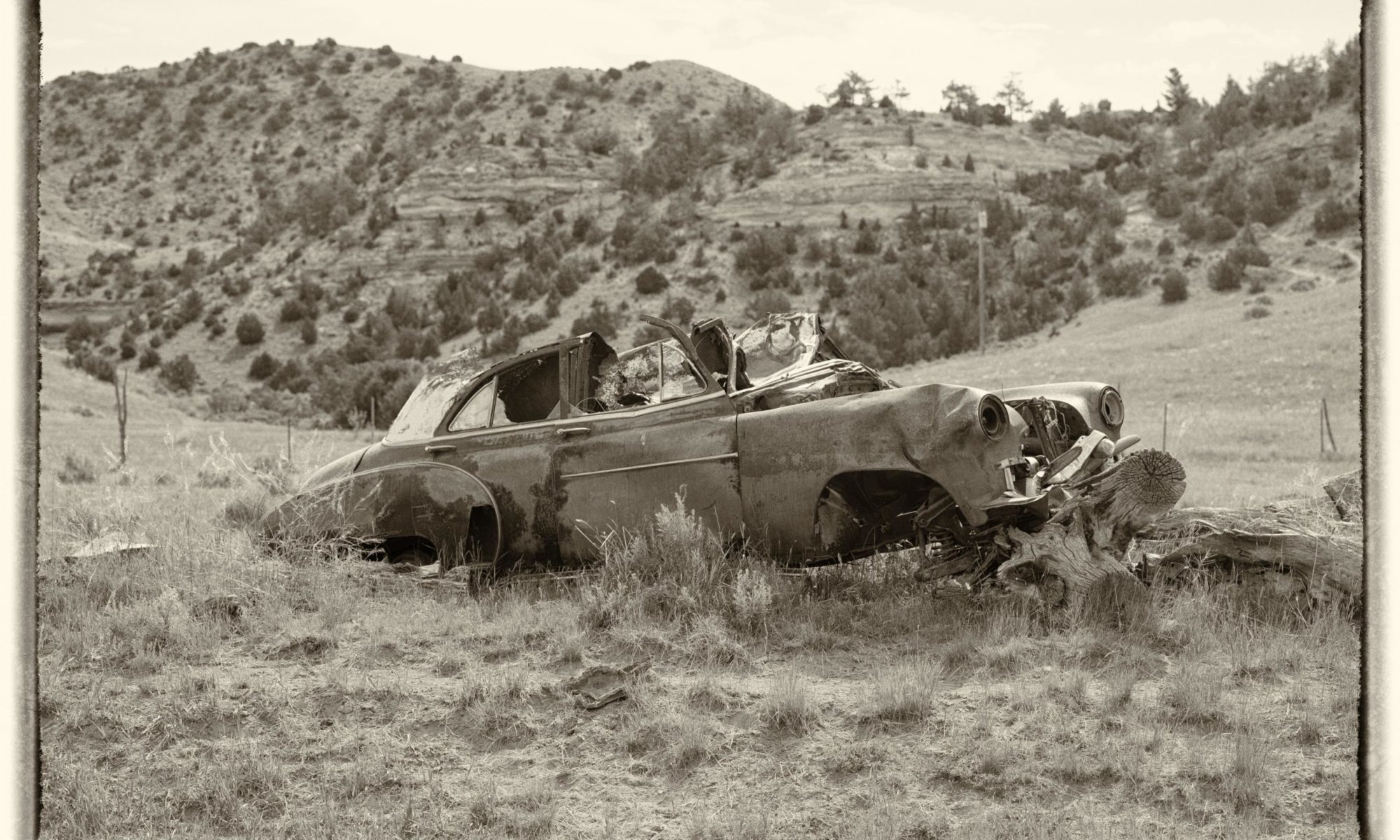It was a steep trek up the mountainside. When I heard we were going hiking in the mountains, I was excited. I thought it would be nice to get away from the masses of people for a bit. We started out for our morning walk up the mountain behind the university campus. Chongqing has been referred to as “the city of stairs,” and I can attest to that truth. Steep paved trails and steps from all directions led up the slopes. As we climbed, we passed farms and gardens tucked in every valley, nook, and hollow. We saw women hoeing and tending the crops. Large round metal buckets held human refuse used for fertilizer. The stench was quite awful. Everything except for what was in the buckets was green. Just that morning as we left our hotel, we saw ladies from the mountain farms headed to market carrying their freshly picked produce that was still wet from their morning washing.
As we walked the trails, I wondered how they ever paved those walkways high in the hills. It must have been quite an undertaking. Looking back to the city below, we could see that every bit of land was used. Beyond the lush green gardens and farmhouses tucked away in the foliage and fences was the city of Chongqing shrouded in smoke and haze. The Yangtze River wandered through the valley like a huge mythical dragon slithering through the streets and winding around tall buildings. We saw the top of the Taoist temple above the trees on a ridge across the valley. The corners of the temple’s dual hip-and-gable xieshan roof swooped down and curved upward at the eaves to ward off evil spirits. Many people used the same roof style to prevent spirits from invading their homes. We saw roof ridges adorned with dragons and other mythical beasts that ancient Chinese believed would prevent fire and drive demons away.
Even on the mountain paths we saw many people. There were places beside the trail where worshipers had offered sacrifices to their gods. Ashes from incense, residue from rotted fruits and vegetables, and various trinkets remained on the sacred site that others dared not bother as they passed by.
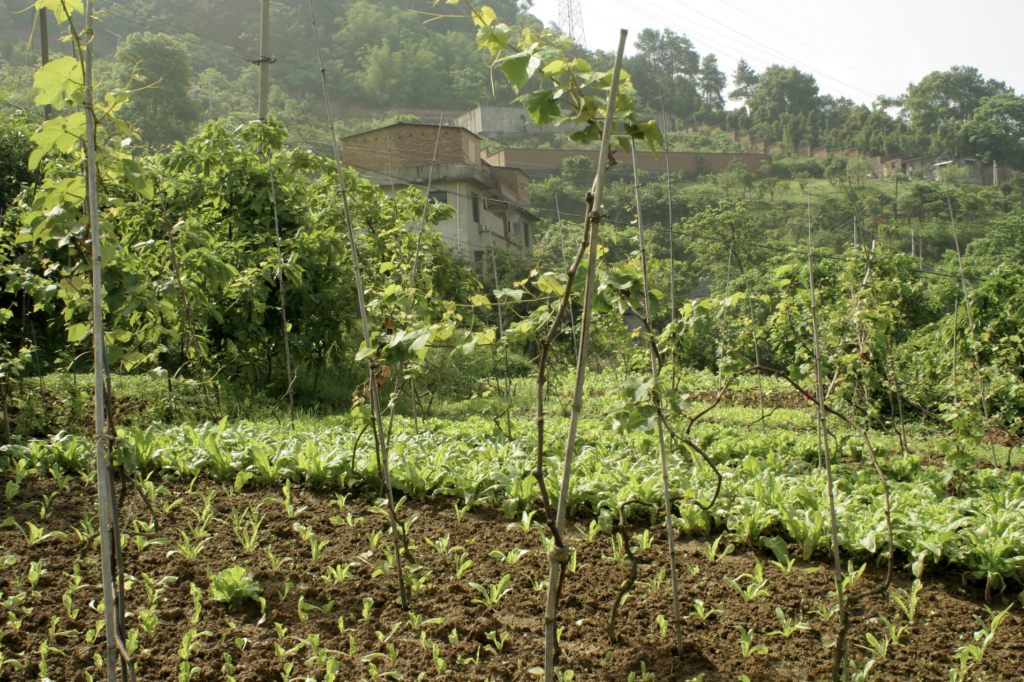
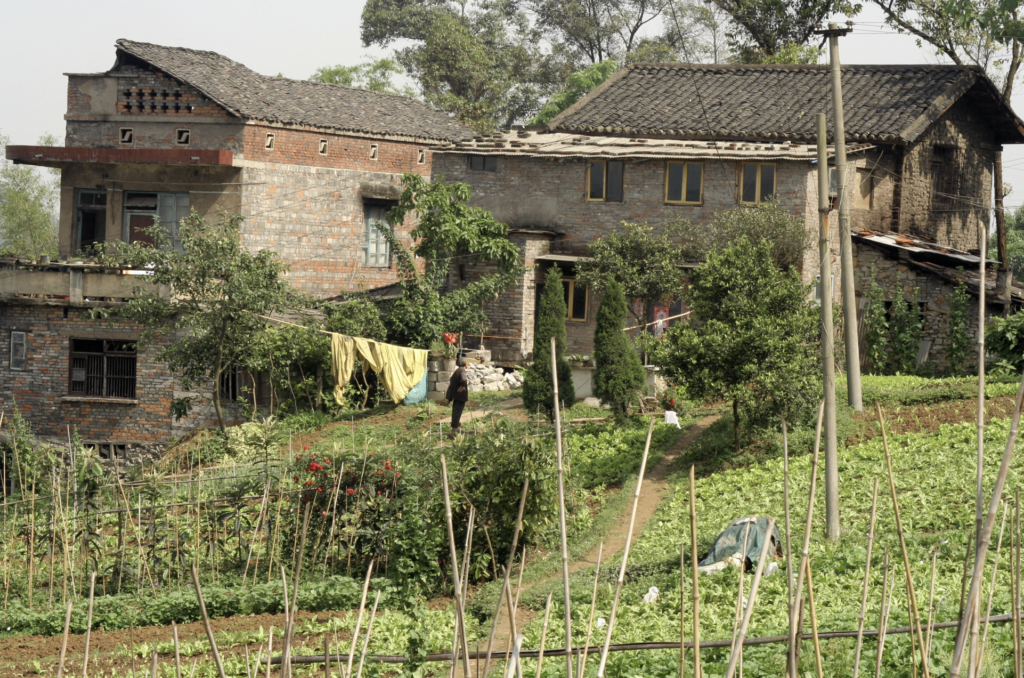
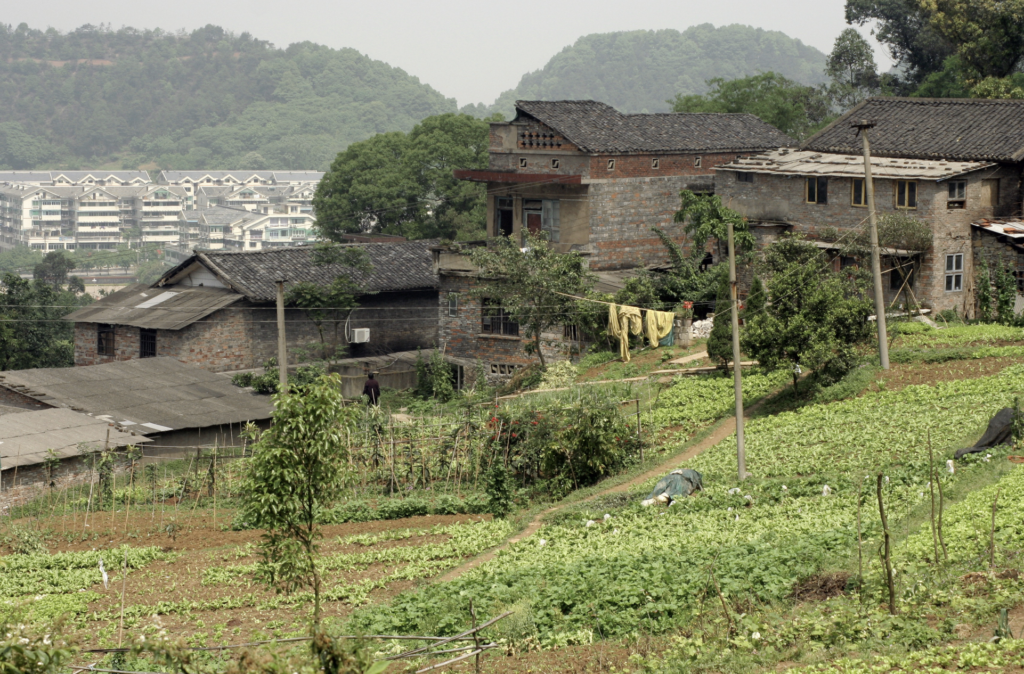
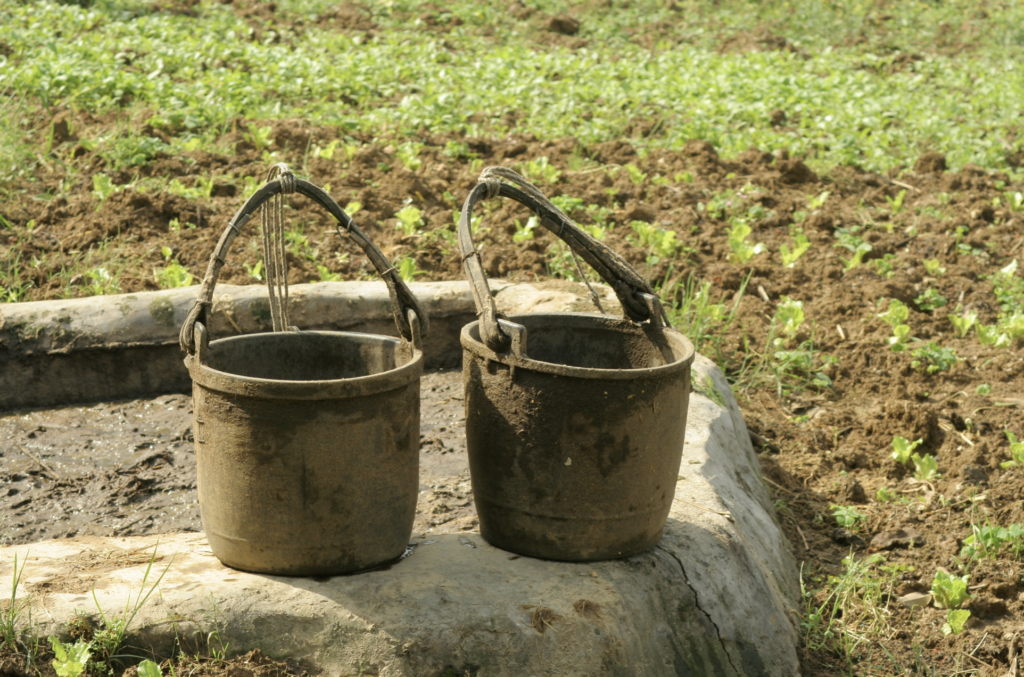
We came to a high ridge where we could see the valleys on both sides. One side revealed the city below. On the other side were miles and miles of hills and jagged ridges that looked like spikes and scales along the backbone of an ancient serpent. A graveyard stepped down the slopes with what appeared to be mausoleums and tombs resting on steep tiers that descended into the gorge. Through the haze and thick growth of vegetation, we saw walls that meandered up and down the rises and dips of the hills. The tops of the walls that seemed to be a lesser version of the Great Wall were pathways complete with more steps.
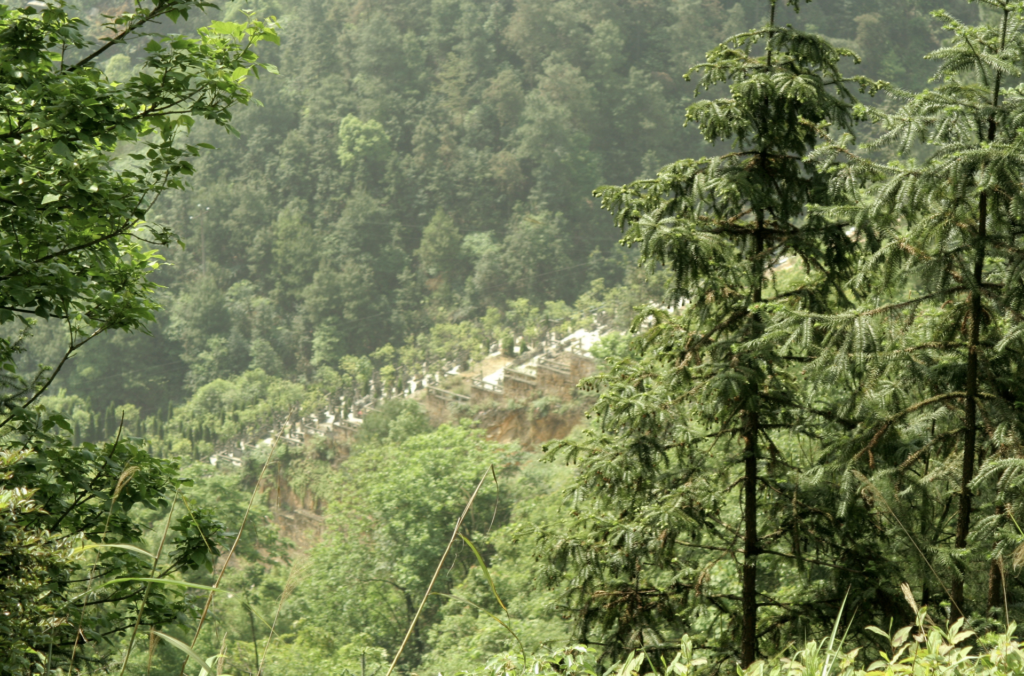
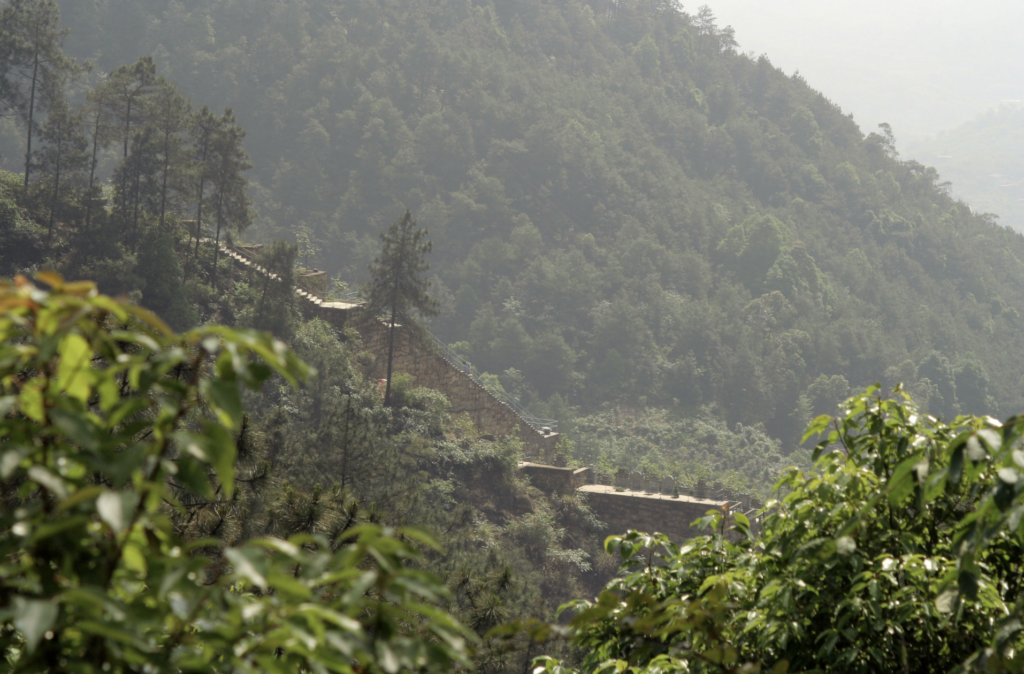
The heavy humid air intensified the somber silence as we took in the scene before us. The quiet moment was a reprieve from the noisy streets that was short lived as we continued our journey. We followed the trail into some thick foliage but when we emerged, we were surprised to see we weren’t alone. It looked like a group of people were having a party on the top of the ridge. Chinese ladies were decked out in bright clothing and high heels. They wore hats and carried umbrellas to protect themselves from the sun. A couple of the ladies wore head coverings made out of bushes, one of which still had flowers on it. When they saw us, they swarmed around the cute fair skinned, green eyed, blonde curly headed little girl who rode on her mama’s back. The ladies all wanted to touch her and tried to shade her from the sun. To them, fair skin was preferred to their olive color, a belief that goes back to ancient China. Farmers and laborers had darker tanned skin. The elite, those of wealth, had paler skin because they spent days inside. White skin represented prestige and was the most desirable. When my daughter was expecting her “China Doll”, the Chinese women catered to her. They insisted she eat lots of tomatoes because they believed that would give her child lighter colored skin. As we turned back to the trail, I wondered how those women made the climb up the mountain paths in those high heels. Nonetheless, we left them to continue our walk.
Once again there was solitude. Then we heard voices and music and followed the sounds. There, below us in an opening through the trees was a restaurant. The walls of the building and lean-to were made of plastic or something similar. Their dining room was a few small tables and benches tucked in close to the building. The roof was made of pieces of tin, plastic, and bamboo. Another building across the concrete yard may have been a home. I had to smile as I thought that even here on the mountainside were more people. The hustle and bustle of the city streets below made its way up the mountain.
It had been a good day discovering more of the lifestyle and culture of these intriguing people. We headed back down the mountain, tired but satisfied from our adventure. The streets teemed with life. I turned to look back at the mountain that appeared serene and quiet, but I knew that, yes, even the hills were alive.
